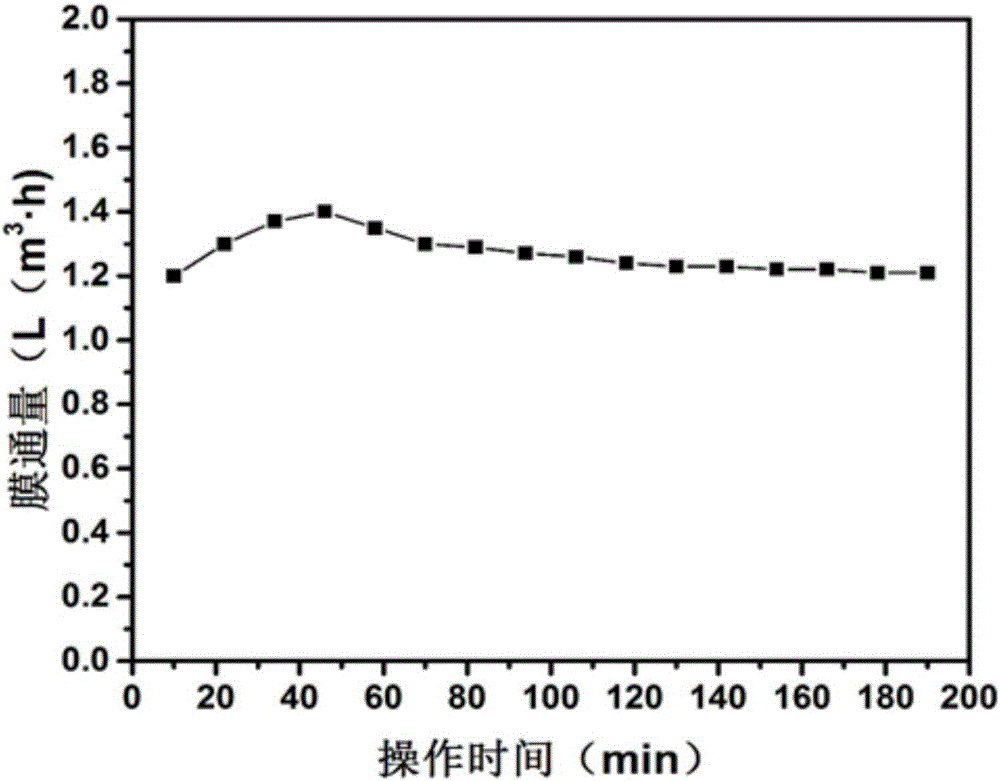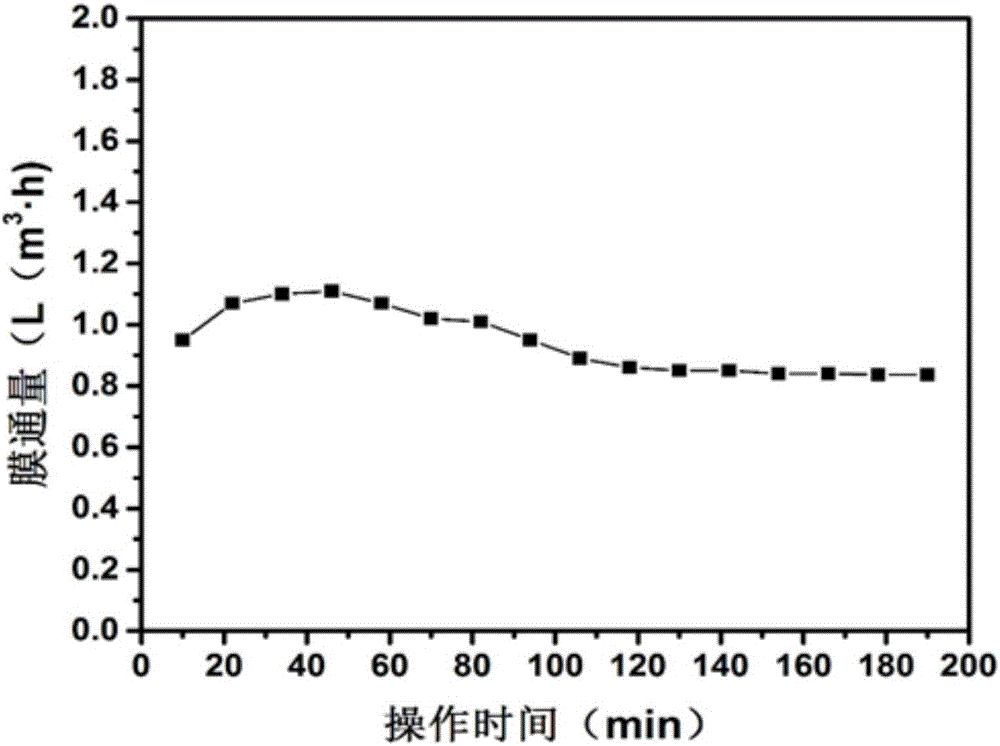Method for regenerating waste lubricating oil through membrane separation
A waste lubricating oil and membrane separation technology, applied in the direction of semipermeable membrane separation, lubricating composition, chemical instruments and methods, etc., can solve the problems of high oil viscosity and low permeability, achieve convenient operation and solve high energy consumption , the effect of good application prospects
- Summary
- Abstract
- Description
- Claims
- Application Information
AI Technical Summary
Problems solved by technology
Method used
Image
Examples
Embodiment 1
[0018] Using the membrane separation method of the present invention to regenerate waste lubricating oil, the rolling oil produced by the DMS20-roll reversing cold rolling unit (Monobloc type) in the headquarter cold rolling plant of Shanghai Baosteel Stainless Steel Co., Ltd. is purified. Synthesize polyvinylidene fluoride ultrafiltration membrane first: disperse 80mg of graphene in 40g of N,N-dimethylformamide solvent, ultrasonically treat for 3 hours to obtain a dispersion; then 9g of PVDF and 1g of PVP powder are placed at 50°C Stir and dissolve in the dispersion liquid, stir for 24 hours, and then ultrasonicate for 2 hours to obtain a uniform casting solution; the casting solution is scraped by a film scraper to form a primary film, and the primary film is immersed in a coagulation bath for 10 minutes, and then transferred to a deionized water bath Soak in medium for 7 days to solidify and form a film, and then dry naturally to obtain a superhydrophobic polyvinylidene fluo...
Embodiment 2
[0021] Using the membrane separation method of the present invention to regenerate waste lubricating oil, the rolling oil produced by the DMS20-roll reversing cold rolling unit (Monobloc type) in the headquarter cold rolling plant of Shanghai Baosteel Stainless Steel Co., Ltd. is purified. Synthesize polyvinylidene fluoride ultrafiltration membrane first: disperse 40mg of graphene in 40g of N,N-dimethylformamide solvent, ultrasonic treatment for 3 hours to obtain dispersion liquid; then 8g of PVDF and 2g of PVP powder at 50℃ Stir and dissolve in the dispersion liquid, stir for 24 hours, and then ultrasonicate for 2 hours to obtain a uniform casting solution; the casting solution is scraped by a film scraper to form a primary film, and the primary film is immersed in a coagulation bath for 10 minutes, and then transferred to a deionized water bath Soak in medium for 7 days to solidify and form a film, and then dry naturally to obtain a superhydrophobic polyvinylidene fluoride ul...
Embodiment 3
[0027] Synthesize polyvinylidene fluoride ultrafiltration membrane first: disperse 10mg graphene in 70g N,N-dimethylformamide solvent, ultrasonic treatment for 12 hours to obtain a dispersion; then 10g PVDF and 3g PVP powder at 20°C Stir and dissolve in the dispersion liquid, stir for 3 hours, and then ultrasonicate for 1 hour to obtain a uniform casting solution; the casting solution is scraped by a film scraper to form a primary film, and the primary film is immersed in a coagulation bath for 45 minutes, and then transferred to a deionized water bath Soak in medium for 2 days to solidify and form a film, and then dry naturally to obtain a superhydrophobic polyvinylidene fluoride ultrafiltration membrane. The waste lubricating oil is first heated to 40°C, filtered with a slow-speed filter paper with a diameter of 11cm, and vacuumed with a water pump to speed up the filtration speed and remove large solid impurities; then dehydrate under vacuum, the vacuum dehydration temperatu...
PUM
| Property | Measurement | Unit |
|---|---|---|
| pore size | aaaaa | aaaaa |
Abstract
Description
Claims
Application Information
 Login to View More
Login to View More - R&D
- Intellectual Property
- Life Sciences
- Materials
- Tech Scout
- Unparalleled Data Quality
- Higher Quality Content
- 60% Fewer Hallucinations
Browse by: Latest US Patents, China's latest patents, Technical Efficacy Thesaurus, Application Domain, Technology Topic, Popular Technical Reports.
© 2025 PatSnap. All rights reserved.Legal|Privacy policy|Modern Slavery Act Transparency Statement|Sitemap|About US| Contact US: help@patsnap.com



